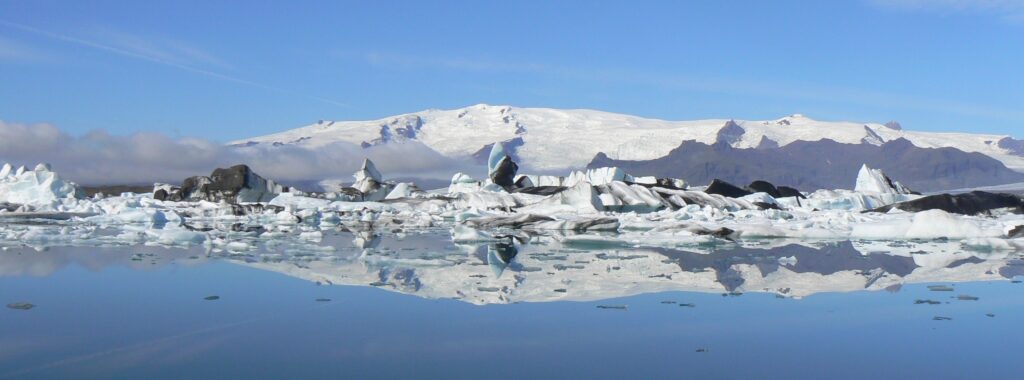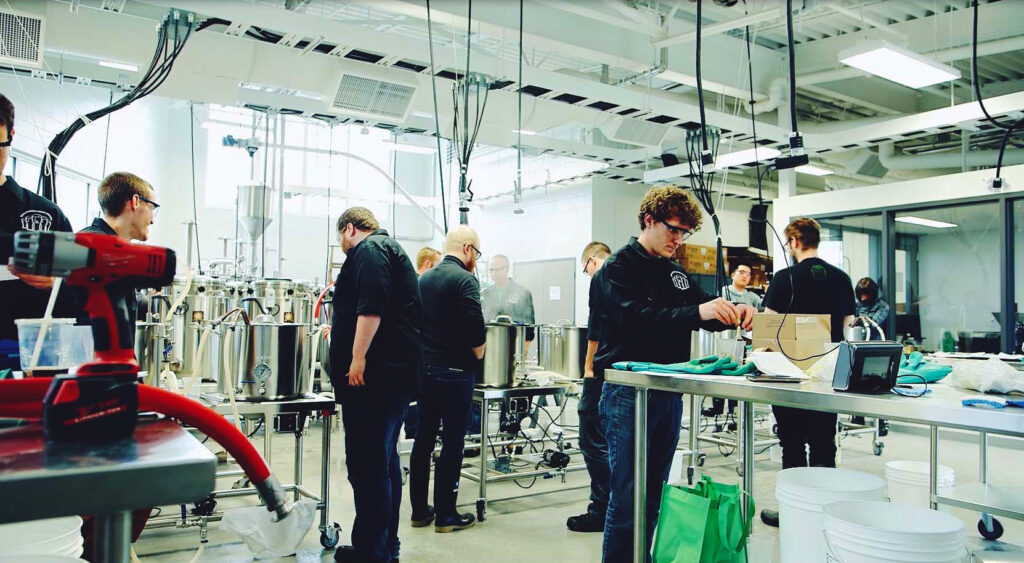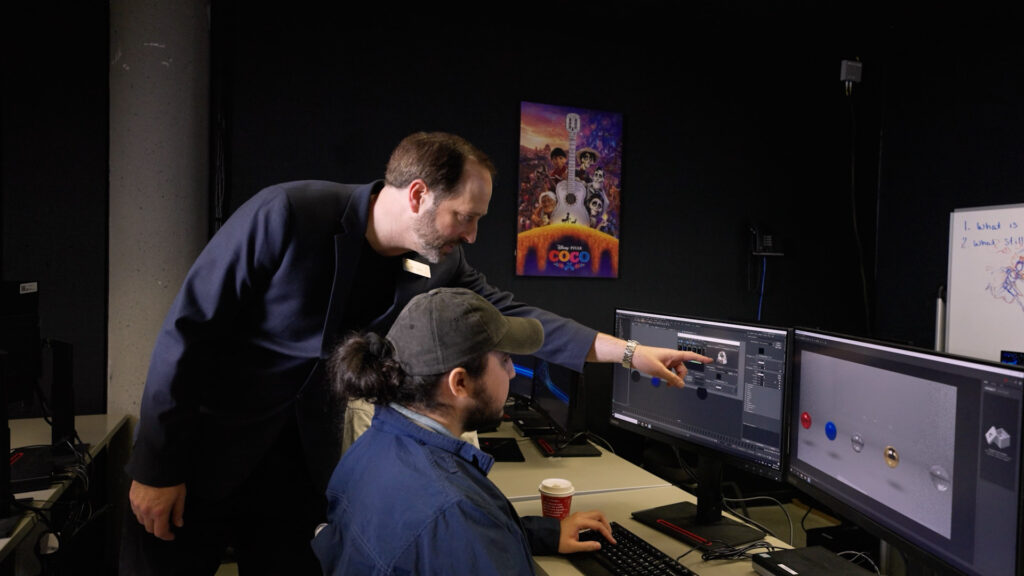
The past year I have given a dozen presentations on the Climate+ Challenge. This includes many department visits. Often the connection was clear: biology can speak to changing species distributions, fine and expressive arts can have students analyze or create art that grapples with climate issues, and psychology can explore climate anxiety and evidence-based solutions.
To challenge myself, and offer inspiration for those wanting to relate the changing climate to their courses, I chose ten disciplines taught at KPU with less clear (to me) climate connections. These disciplines seemed, at first glance, to have the least likely link to the climate crisis. What my research revealed was not a lack of connection, but simply my own ignorance. Which led to the realization: every course at KPU, from every discipline, possesses a climate connection. See for yourself and Google your discipline’s name + climate change.
Here are ten examples:
Appliance Servicing
Appliance type and usage relates directly to our carbon footprints. Appliance repair, rather than replacement, reduces waste and environmental impact (not to mention being cost-effective for the consumer). The right to repair movement is making strides in Europe, and Canada aims to follow their lead by making this a key policy priority, though not without potential loopholes. Thus there is plenty of climate-related content for appliance servicing courses to explore, well beyond the fact that the burning of gas appliances contributes to the greenhouse effect. You contribute to the carbon cycle every time you turn on your stove or dryer.
Brewing & Brewery Operations

The climate crisis is leading to severe drought conditions across the continents. Drought impacts barley growth, the key ingredient for malt production. Similarly, hops, a flavouring and stability agent in beer, is seeing a decline in quality due to global warming. Hops is being researched at KPU at the Applied Genomics Centre where they are breeding drought and heat tolerant strains. Vancouver Island University partnered with a brewery to raise awareness about climate adaptability for ocean organisms. Methods for brewing in a carbon neutral way are being explored by the Canadian Homebrewers Association. Every beer you drink has a climate story.
Computer Science
Computer models are vital for predicting changes in global climate. Further, such simulations can make clear the changes we need to make (in agriculture, trade, transportation, and more) to reach sustainable or zero-carbon scenarios. Artificial intelligence and data analytics can help the transition to renewable energy and reduce carbon emissions. Computers are essential for envisioning viable climate solutions.
Entertainment Arts

Gamers in the US generate 24 million metric tons of carbon dioxide per year, equivalent to the emissions of over 5 million cars.
Video games, like any of the arts, can engage with the climate emergency through participant experience and artistic creation. Eco, Climate Quest, and Wildlife Sanctuary are just a few of the games and apps where players make decisions related to climate and watch a live simulation of their impacts. Designers can shrink their data footprints (e.g., using compressed video) and incorporate climate solutions into gameplay. Further, recording energy usage by gamers, and other climate impact data, can help us determine the extent of energy consumption by video games and determine which devices and designs best decrease energy usage. Gaming offers a doorway to infinite possibilities.
Human Resources Management
One way for Human Resources to decrease employee carbon footprints is to be flexible with hybrid or remote work options. In addition, proper equipment usage can avoid replacement and encourage repair (see Appliance Servicing above). Research shows that environmentally-friendly HR practices result in increased employee climate action. Conversely, according to one report, 43% of companies are guilty of greenwashing, which can be demotivating for employees. The role of HR in addressing the climate emergency includes sustainability training, green hiring strategies, and shortening the work week.
Interior Design
The total carbon emissions for interior design—from manufacture to installing—is on par with the construction of an entire building. Green building design can significantly help combat climate change. Upcycling, repurposing, energy-efficiency, and material longevity can reduce carbon footprints. Teaching sustainable design principles will result in less pollution and waste, and therefore less greenhouse gas emissions. Time to design with carbon in mind.
Linguistics
The climate crisis is directly tied to increased language loss. While species extinction is being accelerated, cultural and linguistic diversity are also disappearing. The way we use language can influence our relationship with the natural world. In fact, the original alphabet bore inspiration from the natural world, such as A coming from ox, M from water, and N from fish. Ecolinguistics, which aims to connect the language of a community with its natural and cultural ecosystem, may help us erase the nature/culture divide and preserve endangered languages. Words hold meaning and power, and the ability to inspire change.
Mathematics
In hindsight, the connections between climate, computer science and mathematics are rather obvious. Climate content can be added to any mathematics course. Modelling, predictions, and algebra can all easily be incorporated with climate. Calculus, trigonometry, polynomials, and any statistics are also relevant. This YouTube video explains how to facilitate lessons on CO2 emissions, atmospheric CO2, and calculating uncertainty using hurricane data records. Numbers and climate go hand in hand.
Nursing

The World Health Organization referred to the climate crisis as the “single biggest health threat facing humanity.” Nurses work in health care, thus they can speak to patients about human health and climate, and encourage healthier lifestyles (e.g., diet, exercise, carpooling) that are often more environmentally friendly. Here is a great resource on The Role of Nursing in Climate Change, including starting an action plan. Key climate-related teaching topics include health care and climate, climate anxiety, community health care quality and interdisciplinary care. A healthy planet makes for healthy bodies.
Women’s Studies
The climate crisis effects women disproportionately more than men, due (in part) to their greater dependence upon, and less access to, natural resources. Women need better representation as leaders and decision makers. The detailed report, Women and Climate Change Impacts and Action in Canada, outlines intersectional approaches to the climate crisis, and provides examples of women as agents of change, including how Indigenous women can, and do, fundamentally challenge how we frame climate action.
Final Thoughts
When teaching about climate it is important to consider the emotional dimension of the climate crisis. Disassociation is common when we understand the full implications of the climate emergency: dire predictions, ecological collapse, and catastrophic events. Teaching with an empathetic and solution-oriented lens can help ensure that learners feel empowered rather than overwhelmed.
My research in writing this blog revealed that any course is relatable to climate. Further, I believe every single class can—and should—make connections to the climate crisis through an intersectional lens. If we are going to tackle the greatest crisis of our lifetime, then we need to make it priority one.
—
Have a course, lab, or program you want to connect to the climate? Send it to the Climate+ Challenge team!
Thank you for the inspiration and exemplars, Lee!